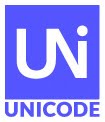This version of the Standard also brings technical improvements to support implementers. Improved changes to property values and their aliases mean that properties now have easy-to-specify labels. The new labels combined with a new script extensions property means that regular expressions can be more straightforward and are easier to validate.
Over 200 new Standardized Variants have been added for emoji characters, allowing implementations to distinguish preferred display styles between text and emoji styles. For example:
| 26FA FE0E | TENT text style | |
| 26FA FE0F | TENT emoji style | |
| 26FD FE0E | FUEL PUMP text style | |
| 26FD FE0F | FUEL PUMP emoji style |
Among the notable property changes and additions in Unicode 6.1 are two new line break property values, which improve the line-breaking behavior of Hebrew and Japanese text. Segmentation behavior was also improved for Thai, Lao, and similar languages.
Two other important Unicode specifications are maintained in synchrony with the Unicode Standard, and have updates for Version 6.1. These will be finalized in February:
- UTS #10, Unicode Collation Algorithm
- UTS #46, Unicode IDNA Compatibility Processing



